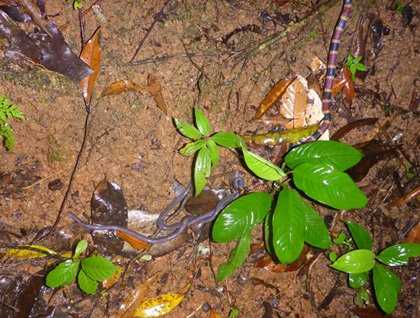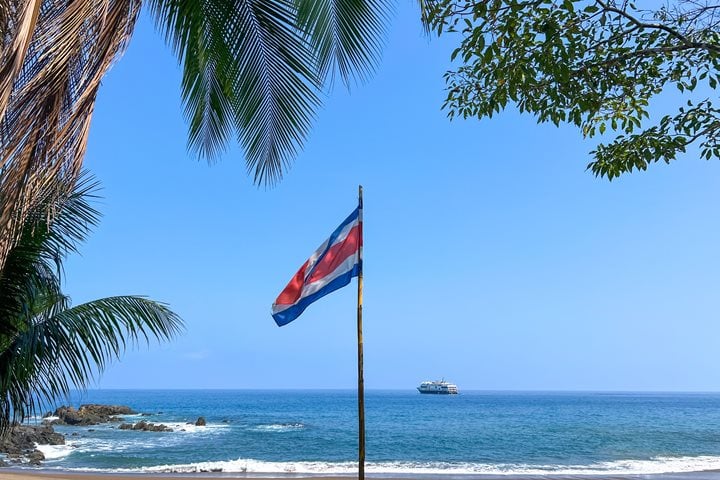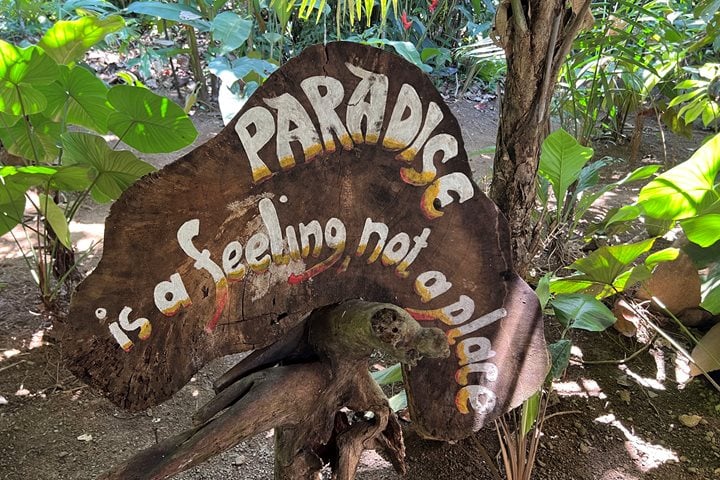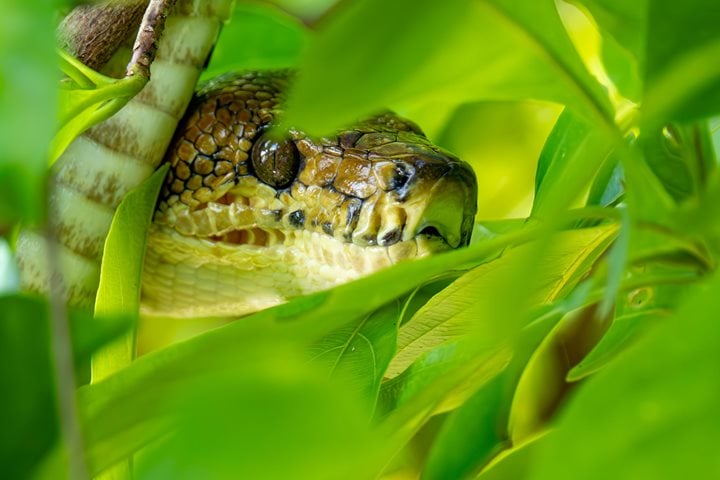I had not been to Caletas in years. I did remember it was a wonderful place, located in the buffer zone of one of the most pristine national parks of Costa Rica: Corcovado. But right after landing I was amazed, as if seeing it for the first time in my life, by the genuine beauty of its bays, the different tonalities of green on the hills in the background, the coconut palms leaning down to the beach. It’s the forest touching the ocean, like in a constant fight of green versus blue; every so often it takes violent forms, through turbulent waves and at times, peacefully, the vegetation touches the sea, gently, along its extended beaches and tiny volcanic bays.
We did not have to go far to encounter wildlife. For the shorter hikers who joined naturalists Jose and Federico, there were scarlet macaws, chestnut-mandible toucans, a purple-crowned fairy hummingbird, a slaty-tailed trogon and the elusive white-necked puff bird. Several guests chose to explore by horseback in the company of Richard, and trotted for a couple of hours along the beach and through the woods.
For long hikers the highlight was a coral snake eating a slender caecilian (“solda con solda” in Costa Rica). Margrit, their naturalist, was very excited about this sighting. Caecilian is an order in the animal kingdom, and it is a rare find, as they spend most of their lives hidden in the ground, making them the least familiar of amphibians. They completely lack limbs, so resemble worms, or little snakes, and their skin, like in other amphibians, contains glands that secrete a toxin to deter predators. However this characteristic did not discourage this morning’s snake from eating it. Coral snakes, together with some species of birds, are the few predators of caecilians, which usually only come out of their holes after a heavy shower; therefore this was a present from our rainy morning. It did not matter the weather, it did not matter the option, we all had our rewards and special encounters with nature.
For the afternoon we landed at San Pedrillo, in the heart of Corcovado National Park. We had two different hikes through its forest, which we enjoyed in a holistic way: with their sounds, colors, rivers and rain. Once on the trail and surrounded by trees of different sizes and ages, I understood why Costa Ricans very often use the phrase “pura vida.” This is it. Life at its fullest, pure life, passion and tenderness together, felt in the waterfall, the river, the thunders, and the gigantic waves crashing against the shoreline. Here it does not matter the how’s, the what’s or the why’s. We breathe in life, in its purest state. I am definitely in love with this country and it’s “pura vida.”









